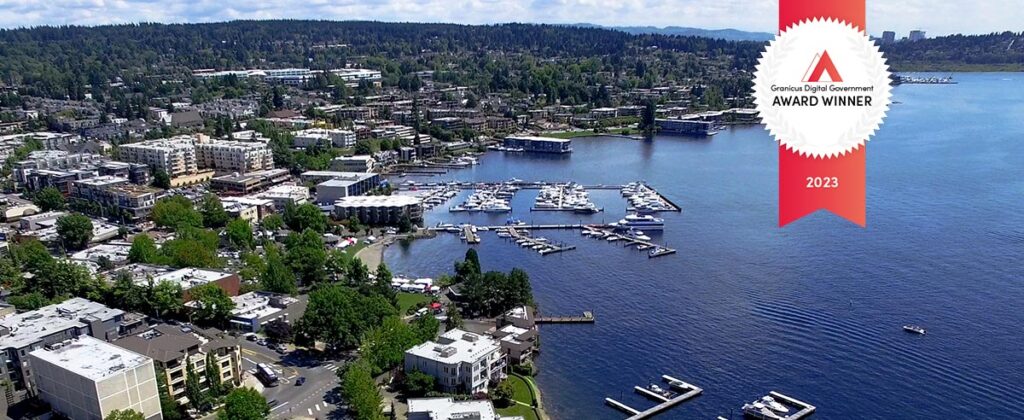How the City of Kirkland Took a Data-Driven Approach to Reframing Their Community Engagement Newsletter


While email newsletters helped provide the growing community of Kirkland, Washington, important information about events and issues, the number of topics led to email delivery bloat. Armed with the data tools in Grancius’ govDelivery system, staff was able to reframe and reformat both the newsletter and their internal processes to engage the community more effectively.
SITUATION
While Kirkland, Washington, may suggest the products that reflect the city’s place as the original headquarters of Costco Warehouses, this suburb just to the east of Seattle has almost doubled its population in the last 15 years – largely due to annexation. Now approaching 100,000 residents, Kirkland increasingly houses numerous companies both in healthcare and technology.
Keeping pace with that explosive growth has presented both a challenge and opportunity to engage residents with community issues, said David Wolbrecht, Communications Program Manager for the City of Kirkland.
“We’ve made significant effort, based on policy and budget decisions, to communicate and increase awareness of city services,” he said “We can’t reach everybody, but we really do our best to innovate and stay up with current trends with a multi-pronged strategy. But our email newsletter is really our backbone for reaching our community and keeping them up to date on all the things that matter to them.”
“This Week in Kirkland,” a weekly newsletter distributed by the city to online subscribers started in 2016, has grown to be a successful tool both for residents and city departments alike. Recently recognized with a “Trust and Transparency” Award in the Granicus Digital Government Awards, the newsletter is the result of six years of continuous improvement that has moved, Wolbrecht said, from a scattered approach to communications to a more focused one.
“Years ago, we didn’t have a newsletter,” he recalled. “We used to have a ListServ that was sent out whenever we issued a news release. The team at the time saw the opportunity to compile all the news releases and information about what was happening that week into one mailing.”
That early newsletter provided the gameplan communication, but Wolbrecht said that a lack of focus became obvious.
“We had a very satellite system where individual departments had their own topics,” he said. “They would send them out, and it was very siloed. Over the last couple years, we really honed in on centralizing a voice and channel to reduce the number of topics going out.”
Fate intervened in 2020, with the pandemic providing just the kind of situation that proved Wolbrecht’s goal of streamlining communications. Being at what The Washington Post called “the epicenter of U.S. coronavirus response,” Wolbrecht’s team saw the need to provide centralized, focused information that impacted a variety of city departments and areas of interest for residents.
“We had some early emergency topics that we developed,” he said. “As things moved into business support amidst the shutdown, the newsletter became a helpful and successful tool in providing support to our local small businesses that were struggling. That was a moment that really showed our adaptability and responsiveness to an important moment.”
As the pandemic waned, however, Wolbrecht wanted to find a way to maintain this new approach to maintaining a focused approach to communications, especially “…with the increasing shift away from traditional media and the slow decline in news publications,” he said. “The importance for local governments to share their stories with the community to help reweave the fabric of our collective civic life looms large.”
SOLUTION
Over the last two years, Wolbrecht’s team has worked to intentionally reframe and reformat “This Week in Kirkland” to meet the changing interests of the community. Much of the change has been fueled by data provided by the tools in govDelivery, which Kirkland has been using to manage their communications since before the newsletter began.
“We have a robust dashboard that we generate looking at all our channels,” Wolbrecht said. “We look at the govDelivery data at least monthly for open rate, click rate, the backbone kind of data. It’s invaluable in my mind just to know what is relevant to our community. There are some things we need to communicate, but there’s also flexibility about how we’re framing it to get audiences to engage with the email. So, those inherent tools are helpful.”
Armed with the insights gathered from their data, Wolbrecht’s team made what he called “really intentional structural decisions” to how the newsletter was presented, including a brief preview or recap of what’s before the City Council, a “Community Conversations” section that provides avenues for community members to get engaged in planning processes, the previous week’s news releases, featured videos, weekly traffic alerts for road closures due to construction, and upcoming community events.
Coalescing the numerous departments of city services into one concise newsletter required outreach and planning across the city departments, Wolbrecht said.
“We started convening a monthly meeting that includes staff across the departments,” he said.
“Twenty to 30 folks who are the people who could otherwise be sending out their own emails. It’s a chance to let everyone know what each other is doing, provide a little training on how to best communicate information, and, if nothing else, create a bridge and connection. As a result, folks inherently started to say ‘Oh, hey! I’ve got this thing. Let’s put it in the newsletter.’”
By formalizing “This Week in Kirkland’s” production schedule, Wolbrecht said it became easier to work with various departments and receive information in a way that allowed for many articles to be included in a newsletter that had a cohesive tone for audiences.
“We can take in a lot of articles every week and be able to quickly turn them around into a usable draft only because of the team that that I have and all the hard work we’ve done to really streamline our process,” he said. “That’s how we can consistently put out a 2,500 word newsletter every week. That consistency and quality, I think, has an influence on our colleagues, and is also reflected in the improved engagement, open rates and click rates.
“The proof’s in the pudding,” he added.
RESULTS
That proof of “This Week in Kirkland”’s success is both quantitative and anecdotal.
With 6,845 subscribers, the newsletter saw an average open rate of 43 percent between December 2022 and May 2023, with click rates averaging between 5 and 8 percent. And while each issue contains numerous sections to encourage engagement, a recent online community survey related to a potential parks ballot measure saw 1,315 total responses (approximately 30 percent of the total) come from “This Week in Kirkland” outpacing all social platforms combined (Facebook, Twitter, Nextdoor, and Instagram) by 11 percent.
The success is due in part, Wolbrecht said, to creating a “a very efficient and effective process and culture for the folks feeding in the content.” But he also was quick to add that a continued focus on providing easy access to resident services has also been a strong part of the newsletter’s success.
By placing easy access to “Our Kirkland,” the city’s constituent response management system, Wolbrecht said that he believes that “This Week in Kirkland” is not only changing how Kirkland’s communities are engaging with pertinent information, but also changing behaviors in how they reach out to public services.
“There’s a trend I’ve observed where we’re seeing fewer random phone calls,” he said. “Having an anchored table of contents at the top of the email changed, I think, how people use the newsletter. They can do a quick scan, see what was relevant to them, check it out for 30 seconds and move on.”
The breadth of topics covered in such a centralized approach has also had an impact on how Kirkland’s City Council approaches their communications strategies around upcoming issues, seeing the newsletter as a critical engagement tool.
“Now, oftentimes, when they’re being briefed by staff at a council meeting about a big project or a big engagement effort, they’ll be sure to mention the need for the communication channels and the newsletter,” Wolbrecht said. “It’s really been that top to bottom buy-in that has contributed to our success.”
That success has spawned growth into future messaging channels, with SMS text messaging becoming a significant tool in communicating updates for an upcoming construction project that will create daily impacts for three months. Wolbrecht said that the opportunity to expand touchpoints with the community is just the next step in building effective communications strategies.
“We hadn’t been collecting user telephone numbers during sign-ups or having it as a required field, so a lot of our databases have been missing that piece of data,” he said.
The size of the project, and the attention Wolbrecht expects it to garner, will only benefit the growth of other topic channels and overall communications and engagement.
“It’s going to provide opportunities for continued exploration,” he said. “That’s definitely an exciting and intriguing area for us for future connections with the community.

